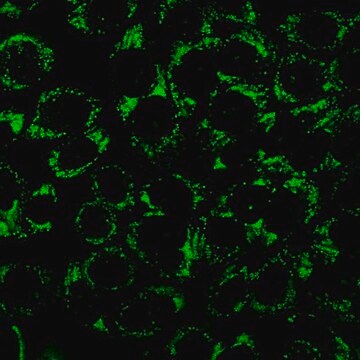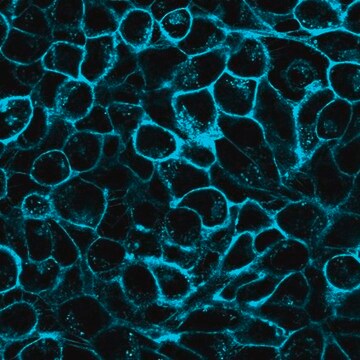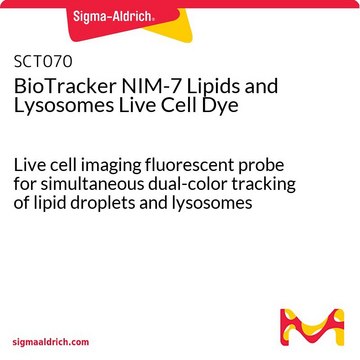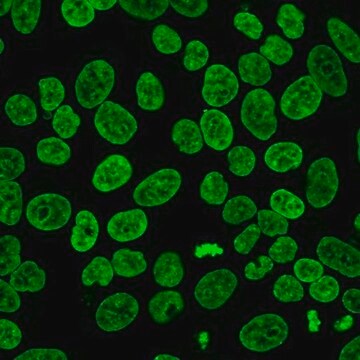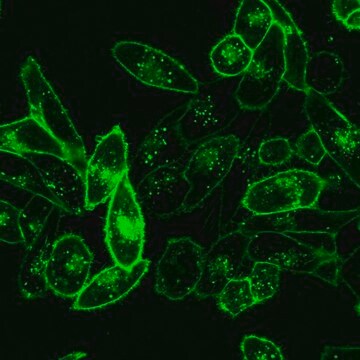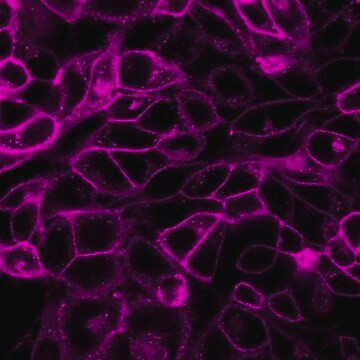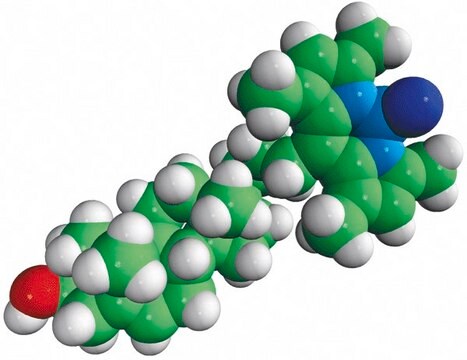SCT241
BioTracker™ LD-1 Near-IR Lipid Droplet Live Cell Probe
Sinonimo/i:
BioTracker™ LD-1 Near-IR Lipid Droplet Live Cell Probe, Lipid Droplet Live Cell Dye, Lipid Droplet Live Cell Probe, Lipid Droplet Probe, NIR Lipid Droplet Dye
About This Item
Prodotti consigliati
Confezionamento
vial of 1 mg
Livello qualitativo
Produttore/marchio commerciale
Millipore
tecniche
cell culture | mammalian: suitable
flow cytometry: suitable
Metodo di rivelazione
fluorometric
Condizioni di spedizione
dry ice
Temperatura di conservazione
−20°C
Descrizione generale
This LD-1 probe is chemically optimized for the low-polarity, high-viscosity microenvironment found in lipid droplets.
In contrast with Raman microscopy and transmission electron microscopy (TEM) fluorescent small molecule probes have been developed as promising tools for detecting LDs . Advantages of fluorescent LD probes include the capability for real-time and in vitro testing, plus excellent selectivity and sensitivity.
Spectral properties
Absorbance : 650 nm
Emission (max): 745 nm
Reference
Wu X, Wang X, Li Y, Kong F, Xu K, Li L, Tang B. 2022. A near-infrared probe for specific imaging of lipid droplets in living cells. Anal Chem. 94(11):4881–4888.
Applicazioni
Caratteristiche e vantaggi
Descrizione del bersaglio
Stato fisico
Stoccaggio e stabilità
Note legali
Esclusione di responsabilità
Codice della classe di stoccaggio
11 - Combustible Solids
Classe di pericolosità dell'acqua (WGK)
WGK 3
Punto d’infiammabilità (°F)
Not applicable
Punto d’infiammabilità (°C)
Not applicable
Certificati d'analisi (COA)
Cerca il Certificati d'analisi (COA) digitando il numero di lotto/batch corrispondente. I numeri di lotto o di batch sono stampati sull'etichetta dei prodotti dopo la parola ‘Lotto’ o ‘Batch’.
Possiedi già questo prodotto?
I documenti relativi ai prodotti acquistati recentemente sono disponibili nell’Archivio dei documenti.
Il team dei nostri ricercatori vanta grande esperienza in tutte le aree della ricerca quali Life Science, scienza dei materiali, sintesi chimica, cromatografia, discipline analitiche, ecc..
Contatta l'Assistenza Tecnica.